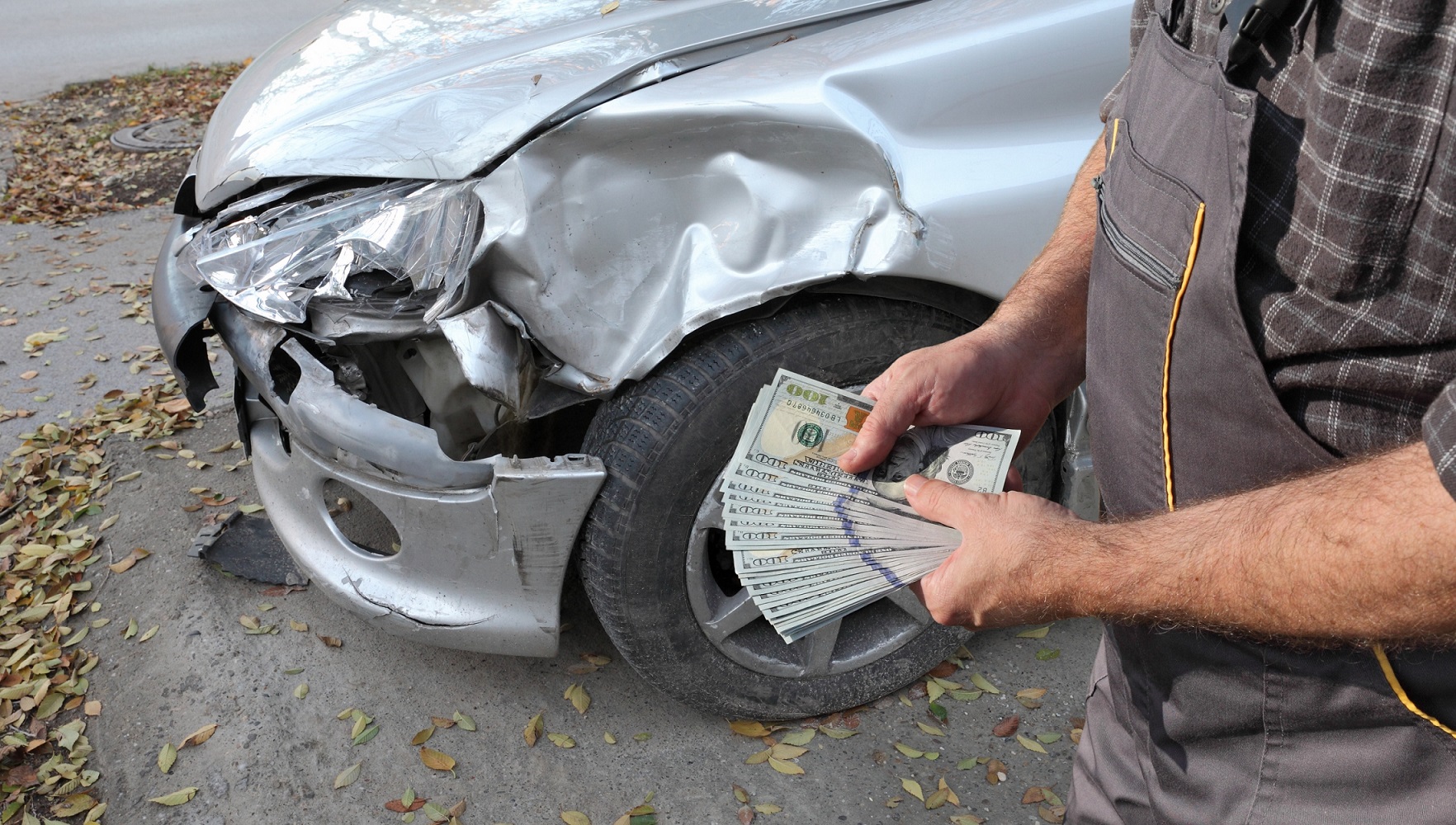In the ever-evolving landscape of the automotive industry, the role of junk cars has undergone a significant transformation. Historically, vehicles that had outlived their utility were often discarded without much thought, left to rust in scrapyards or abandoned in open spaces. These discarded vehicles, over time, became not just an eyesore but a testament to the wasteful practices of yesteryears. However, as the world becomes increasingly environmentally conscious, there’s a renewed perspective on these old vehicles.
The environmental challenges posed by climate change, pollution, and resource depletion have led to a global movement towards sustainability. In this context, the automotive world has been under scrutiny due to its substantial carbon footprint and resource-intensive nature. Junk cars, which were once a symbol of waste, are now at the forefront of this sustainability movement.
The shift in perspective is not just about recycling metals or repurposing parts; it’s about a holistic approach to the life cycle of a vehicle. From the moment a car is manufactured to the time it’s discarded, every stage has environmental implications. And as the world grapples with the pressing need to reduce its carbon footprint, the way we view and handle junk cars becomes crucial.
Junk cars, in their very essence, are a reservoir of resources. Metals like steel, aluminum, and copper can be extracted and recycled. Plastics, rubber, and even certain electronic components can be repurposed. By tapping into this reservoir, the automotive industry can significantly reduce its reliance on virgin resources, leading to a decrease in mining activities, reduced energy consumption, and a decline in greenhouse gas emissions.
Junk Cars: A Historical Perspective
The automobile, since its inception, has been a symbol of progress, freedom, and innovation. As the 20th century progressed, cars became more accessible to the masses, leading to an explosion in vehicle ownership. Cities grew, highways stretched across nations, and the world became more interconnected than ever before. However, with this progress came an unintended consequence: the accumulation of old, decommissioned vehicles.
In the early days, when a car reached the end of its life cycle, it was often left abandoned or dumped in a remote area. These vehicles would slowly deteriorate, with their metals rusting and fluids leaking into the ground. Over time, these abandoned cars became not just an environmental concern but also a visual blight on the landscape.
As urban areas expanded and populations grew, the problem of discarded vehicles became more pronounced. Large scrapyards began to appear on the outskirts of cities, filled with rows upon rows of old cars. These scrapyards, while providing a centralized location for discarded vehicles, did little to address the environmental concerns. The cars still rusted, the fluids still leaked, and valuable resources remained locked within these decaying hulks.
It wasn’t until the latter half of the 20th century that a shift in mindset began to occur. Environmental movements gained traction, and there was a growing realization that the planet’s resources were not infinite. The concept of recycling, which had been around for centuries, began to be applied to the automotive industry. Instead of viewing old cars as waste, they were seen as a treasure trove of recyclable materials. Metals could be melted down and reused, plastics could be repurposed, and even the glass from windows found new life in other products.
This shift in perspective was not just driven by environmental concerns but also by economic ones. The process of extracting and refining raw materials is expensive and resource-intensive. By recycling materials from junk cars, industries could reduce costs and decrease their reliance on mining and extraction.
Today, the approach to junk cars is vastly different from a century ago. Modern scrapyards are more than just dumping grounds; they are sophisticated recycling centers. Cars are methodically dismantled, with each component sorted for recycling or repurposing. Fluids are carefully drained and treated, ensuring minimal environmental impact. The entire process is a testament to human ingenuity and the ability to adapt and evolve in the face of challenges.
The Rise of the Junk Car Industry
The transformation of discarded vehicles from mere waste to valuable resources marked the birth of the junk car industry. This industry, which began as a collection of local scrapyards, has evolved into a global enterprise, playing a pivotal role in both environmental conservation and economic development.
The early scrapyards were rudimentary, often lacking the necessary infrastructure to handle the vehicles efficiently. Cars were stacked haphazardly, with little regard for the potential value locked within them. However, as the potential of recycling became evident, these scrapyards began to transform. Modern recycling centers emerged, equipped with the tools and machinery to dismantle vehicles methodically. Every part, from the engine to the upholstery, was assessed for its recyclability or repurposing potential.
The economic benefits of the junk car industry are manifold. For starters, the process of recycling metals from junk cars is significantly more energy-efficient than mining and refining new metals. This not only reduces costs but also decreases the industry’s carbon footprint. Additionally, the industry has created countless jobs across the globe. From workers in recycling centers to those in repurposing workshops, many livelihoods are linked to the junk car industry.
The rise of the junk car industry has also spurred innovation. New methods of extracting metals, more efficient ways of dismantling vehicles, and innovative repurposing ideas have all emerged from this industry. Furthermore, technology has played a crucial role in streamlining operations. Advanced machinery can now dismantle a car in a fraction of the time it took just a few decades ago. Moreover, digital platforms have made it easier for individuals to sell their junk cars, connecting them with recycling centers and repurposing workshops.
The junk car industry is no longer limited to developed nations. As countries around the world recognize the environmental and economic benefits of recycling and repurposing vehicles, the industry has seen global growth. From Asia to Africa, recycling centers are popping up, each contributing to a global movement towards sustainability.
Junk Cars: The Shift to Online Sales
The digital age has revolutionized industries across the board, and the junk car industry is no exception. The traditional model of selling junk cars, which often involved haggling with local scrapyards or placing classified ads in newspapers, has been upended by the rise of online platforms. This shift to online sales has brought about numerous benefits for both sellers and buyers, reshaping the dynamics of the industry.
One of the most significant advantages of online sales platforms is the convenience they offer. Sellers no longer need to physically visit multiple scrapyards to get quotes for their vehicles. With a few clicks, they can list their car, receive offers, and finalize a deal. This ease of access has opened up the market, allowing more people to participate in the junk car industry.
Online platforms have also introduced a competitive element to the junk car industry. With multiple buyers vying for a single vehicle, sellers often receive better offers than they would in a traditional setting. This competition ensures that vehicles are priced fairly, based on their actual value and the current market demand.
Digital platforms have brought about a level of transparency previously unseen in the industry. Sellers can read reviews, check ratings, and even communicate directly with buyers before finalizing a deal. This transparency builds trust, ensuring that both parties are satisfied with the transaction.
Many online platforms prioritize environmental responsibility. They connect sellers with buyers who are specifically interested in recycling or repurposing vehicles. This focus on sustainability ensures that the environmental impact of junk cars is minimized, aligning with the global shift towards eco-friendly practices.
The digital nature of online sales platforms means that the junk car industry is no longer bound by geographical limitations. Sellers can reach buyers from different regions or even countries, expanding their potential market. This global reach has also facilitated the exchange of knowledge and best practices, further advancing the industry.
Environmental Sustainability and Junk Cars
The junk car industry’s evolution is intrinsically tied to the broader movement towards environmental sustainability. As the world grapples with the challenges of climate change, resource depletion, and environmental degradation, the way we handle end-of-life vehicles becomes increasingly significant. The industry’s shift from mere disposal to recycling and repurposing underscores its commitment to a greener future.
One of the primary benefits of recycling junk cars is the conservation of natural resources. Every vehicle contains a wealth of materials, from metals like steel and aluminum to plastics and rubber. By recycling these materials, the industry reduces the need for new raw material extraction. This not only conserves resources but also reduces the environmental impact associated with mining and extraction processes.
Recycling is inherently more energy-efficient than producing new materials. For instance, recycling steel requires 60% less energy than producing steel from iron ore. Similarly, recycling aluminum saves up to 95% of the energy required to produce it from raw materials. By prioritizing recycling, the junk car industry plays a pivotal role in reducing global energy consumption.
The environmental benefits of recycling extend beyond energy savings. By reducing the need for new material production, the industry also cuts down on greenhouse gas emissions. Given that the production of new materials is often associated with significant carbon emissions, the recycling efforts of the junk car industry contribute to global efforts to combat climate change.
Before the rise of the recycling movement, many junk cars ended up in landfills. These vehicles would take up valuable space and pose long-term environmental risks as they degraded. Modern recycling practices have dramatically reduced the number of vehicles ending up in landfills, ensuring that the environmental footprint of end-of-life vehicles is minimized.
The junk car industry’s focus on recycling and repurposing aligns with the principles of the circular economy. Instead of the traditional linear model of “take, make, dispose,” the industry is championing a circular approach where products are recycled, reused, and repurposed, extending their life cycle and reducing waste.
The environmental sustainability efforts of the junk car industry are a testament to its commitment to a greener future. By championing recycling and repurposing, the industry not only ensures the efficient use of resources but also contributes to global sustainability goals. As the world continues its journey towards a more sustainable future, the role of the junk car industry will be pivotal in shaping the path forward.
Technological Advancements and Their Impact
The integration of technology into the junk car industry has been nothing short of transformative. From the initial stages of vehicle assessment to the final processes of recycling and repurposing, technology has streamlined operations, enhanced efficiency, and opened up new avenues of opportunity.
One of the most notable technological integrations in the industry is the use of Artificial Intelligence (AI) for vehicle valuation. In the past, determining the value of a junk car was a subjective process, often leading to inconsistencies and disputes. Today, AI-powered tools can assess a vehicle’s worth based on a myriad of factors, including its age, condition, make, model, and current market demand. This objective assessment ensures that sellers receive a fair price for their vehicles, fostering trust and transparency in the industry.
The rise of online platforms for selling junk cars has been discussed earlier, but it’s worth noting the technological backbone that supports these platforms. Advanced algorithms match sellers with potential buyers, ensuring that vehicles find the right home, whether it’s a recycling center or a repurposing workshop. These digital marketplaces have democratized the industry, providing equal opportunities for all participants, regardless of their size or location.
Technology has also revolutionized the actual process of recycling. Advanced machinery can now dismantle vehicles with precision, ensuring that every part is efficiently extracted for recycling or repurposing. Innovations in metallurgy allow for more effective extraction of metals from vehicles, maximizing the yield and reducing waste.
The integration of data analytics into the junk car industry has provided valuable insights into market trends, buyer preferences, and potential growth areas. By analyzing data, industry players can forecast demand, adjust their strategies, and make informed decisions that drive growth and sustainability.
While technology has brought about numerous benefits, it also presents challenges. The rapid pace of technological advancement means that industry players must continuously adapt and invest in new tools and processes. However, those who embrace technology and harness its potential stand to gain a competitive edge in the ever-evolving junk car industry.
Cash for Clunkers and the Biden Administration
Government policies play a pivotal role in shaping industries, and the junk car sector is no exception. One of the most notable initiatives in recent history is the “Cash for Clunkers” program, which aimed to rejuvenate the automotive industry while promoting environmental sustainability. With the Biden administration’s focus on green initiatives and electric vehicles, there’s renewed interest in such programs and their potential impact on the junk car industry.
The “Cash for Clunkers” program, officially known as the Car Allowance Rebate System (CARS), was introduced during the Obama administration as a response to the economic downturn. The program incentivized vehicle owners to trade in their old, less fuel-efficient cars for newer, more environmentally friendly models. This not only stimulated the automotive industry but also led to a reduction in greenhouse gas emissions, as older vehicles were taken off the roads.
The CARS program had a dual impact. Economically, it provided a much-needed boost to the automotive sector during challenging times. Dealerships saw increased foot traffic, and vehicle sales surged. From an environmental perspective, the program led to the retirement of many gas-guzzling vehicles, replaced by more fuel-efficient models, thereby reducing carbon emissions.
President Joe Biden has been vocal about his commitment to environmental sustainability, particularly in the context of transportation. With a clear focus on promoting electric vehicles and reducing the country’s carbon footprint, there’s speculation about the revival of programs like “Cash for Clunkers.” Such initiatives align with the administration’s goals and could play a crucial role in accelerating the shift to cleaner transportation.
A potential revival of the “Cash for Clunkers” program or similar initiatives could have significant implications for the junk car industry. An influx of vehicles being traded in would mean more materials for recycling and repurposing. Additionally, with a focus on electric vehicles, the industry would need to adapt and equip itself to handle the unique challenges posed by EVs, as discussed in the previous section.
Resources:
https://www.cashforclunkers.org/will-cash-for-clunkers-revived-under-biden/
https://www.des.nh.gov/sites/g/files/ehbemt341/files/documents/sw-35.pdf




